Free download: Top 10 Natural & Easy Remedies for Joint Pain from Home. Learn these helpful remedies.
Estimated Reading Time: 7 minutes read
When dealing with knee pain, it can be unclear where the pain is stemming from. But by identifying if you may have a knee meniscus tear or not, you can begin the healing process more efficiently.
Meniscus tears are among the most common knee injuries in individuals 50 and over. It often leads to pain and a limited range of motion, yikes!
Each of your knees has two C-shaped pieces of cartilage on either side of your knee cap that acts as a cushion between your shinbone and your thighbone.
The inside cartilage is termed the medial meniscus while the outside is called the lateral meniscus.
When healthy, these menisci act like suction cups to keep your knee stable.
And although lateral meniscus tears are less likely than medial tears, both injuries decrease the suction ability of the cartilage.
This causes the knee to feel unstable and leads to pain.
Table of Contents
How Do People Over 50 Typically Get Knee Meniscus Tears?
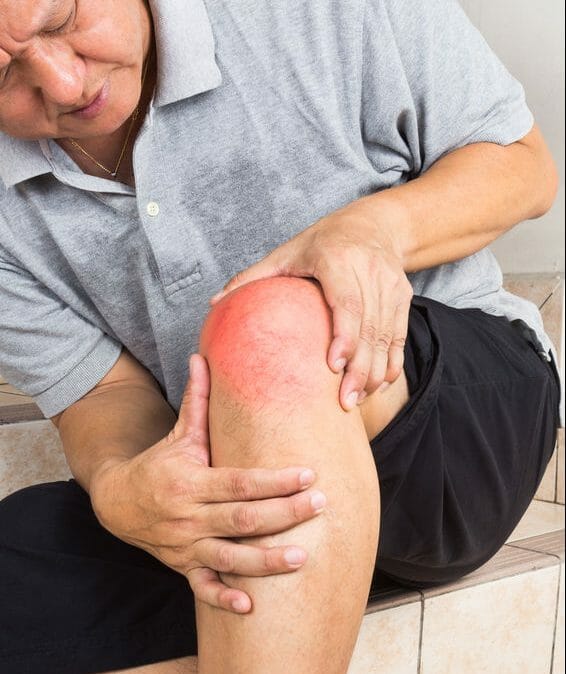
There are two types of causes for meniscus tears, especially in individuals 50 and up.
The first is an acute injury, meaning something suddenly caused the meniscus to tear, strain, or stress.
This can include stepping out of the car wrong, landing in a strange position, or taking a fall.
The other cause of meniscus tears occurs through chronic injuries, such as arthritis.
Arthritis causes wear and tear on the joints, causing the connective tissue (aka the meniscus) to slowly wear out.
When this happens, many individuals start to complain that they are unable to move their knees through a full range of motion and often experience pain when bending over or squatting down.
Top 3 Signs You Have a Knee Meniscus Tear
From the sensation of the knee “giving way” or an uncomfortable catching/locking of the knee joint, it can be difficult to determine exactly what is wrong.
Besides the stiffness and swelling, there can be many signs someone has a meniscus tear.
Here are 3 self-assessments you can do to support your knee meniscus tear symptoms:
Test #1: Pain with Standing Twist
Stand behind a chair on the injured leg. Make sure to keep your knee slightly bent and not locked backward.
Using the chair for support, gently twist your hips back and forth.
Your knee should help stabilize you, however, if this produces pain it is a likely sign you have a torn meniscus.
Test #2: Tenderness at the Joint Line
The space between your shin bones (tibia and fibia) and your thigh bone (femur) is considered the “joint line.”
The border of the joint line at the sides of the kneecap (patellar ligament) and the border above and below the shin should be identified.
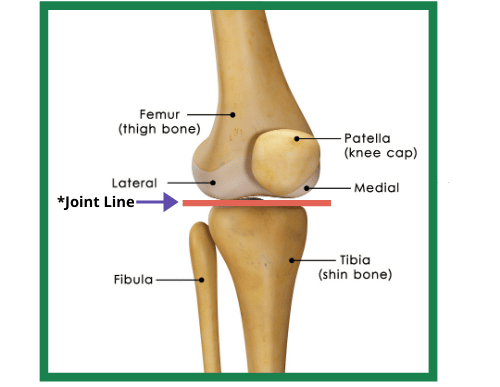
Find your joint line on your affected leg with your fingers and press on it.
If you feel pain when pressed, this can indicate a tear. This test can also help you determine which side the tear may be on.
When you have pain on the inside of your leg, it is most likely a medial tear.
If the pain is on the outside of your leg, it is a lateral tear.
Test #3: Lacking Full Extension
While sitting with both legs out in front of you, try to straighten both legs.
If you notice that one knee doesn’t fully straighten or if it is painful to try and push down on it, this another indication you have a knee meniscus tear.
Did you “pass” all three tests? Don’t fear, this doesn’t automatically mean you’re headed for the surgery room!
Doctors have actually proven that the body can heal itself and that tears can improve with simple exercise.
I have helped many of my own clients improve their pain and discomfort from a knee meniscus tear naturally and now I’ll teach you, too!
Natural Treatment for a Knee Meniscus Tear: Exercise
Because the meniscus has decreased blood flow due to it’s anatomy, it’s super important to start exercises right away.
Now, you may be tempted to “tough it out” and continue your daily activities with a meniscus tear, but I don’t recommend that you hope this pain will go away on its own.
Addressing your knee will help prevent further issues down the road, like severe arthritis.
These exercises below are designed to increase blood flow to the area, supplying nutrients to heal and strengthen the joint.
At first, I do recommend you avoid any intense weight training or closed-chain exercises like squats and lunges.
These exercises require your feet to be planted on the ground and can add additional stress to the knee joint, thus putting too much weight on the meniscus.
Instead, opt for open-chain knee meniscus tear exercises where the foot is free to move. Let me show you!
1. Mini Leg Lifts
In order to stabilize the knee, it’s important to strengthen the surrounding muscle. This exercise is a gentle way to build strength in the top of the thigh (quad muscle).

Place a rolled towel or ball under the knee of the injured leg while sitting on your floor or bed.
Slowly press your knee into the towel to raise your foot off the ground and hold for 5 seconds.

Gently control your foot back down.
Repeat for a total of 10 reps.
2. Full Leg Lifts
This next exercise will again focus on thigh strength which helps stabilize the knee, but it will also incorporate the hip.
The hip and knee work together when walking, climbing stairs, and squatting so it’s important to train them together.
Remove the towel from underneath your knee allowing your injured leg to lay straight out. Your opposite leg should be bent.
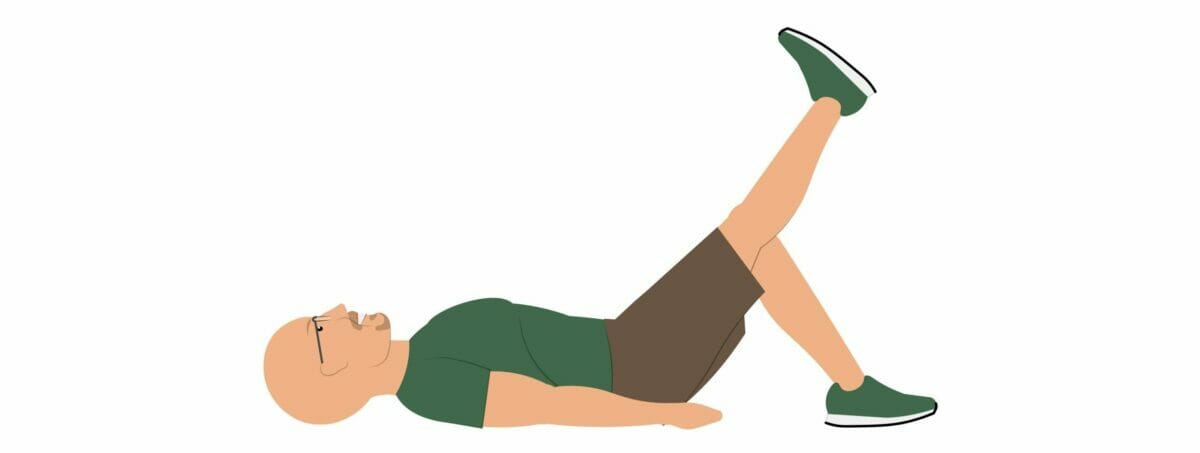
Slowly raise your straight leg off the ground or bed and hold for 5 seconds. Gently control your foot back down.
Repeat for a total of 10 reps.
3. Side Leg Lifts
While the first two exercises focused on strength and control in the front of the leg, this exercise is meant to gain strength in the side of the leg.
It’s important to also target the muscles on the outside of the knee as this group of muscles also has an impact on your stability and balance.
Lay on your side with the bottom leg bent and the injured leg on top and straight. Rotate your foot so that your toes are pointing down.

Slowly lift your leg, keeping your toes pointed downward and hold for 5 seconds when you reach your peak.
Gently control your foot back down.
Repeat for a total of 10 reps.
Did you know that in 5 minutes a day you can strengthen your knees, reduce inflammation and protect your knees?
Our 5 Minute Feel Good Knees method has now been used by thousands to improve knee health and protect against future knee surgeries.
What Is the Meniscus Tear Recovery Time Without Surgery?
As you aim to heal your meniscus naturally, it may be necessary to reduce sport activities or intense plyometrics that place your knee in unstable positions.
This could take anywhere from 4–8 weeks depending on the severity and position of the tear.
During the healing process, your pain and stiffness should decrease along with any “catching” feeling within the joint.
I recommend that you stick with the above exercises daily.
It is also important as you improve to incorporate other strengthening exercises into your routine.
Try starting with some light pool exercises or begin incorporating more closed-chain exercises like in this bodyweight strengthening workout.
One of the best ways to protect your knees while your meniscus recovers is to provide added support.
That’s why I recommend, medical-grade knee compression sleeves because they help to reduce inflammation, increase support and protect your knees.
You can wear them all day for improved stability or even while performing the above knee exercises.
We Support Your Knees With Our Buy 1 Get 1 FREE Offer
We’re proud to provide a Buy 1 Get 1 FREE offer on our new Feel Good Life Knee Compression Sleeves for knee relief. Click below to see how you can purchase one today.


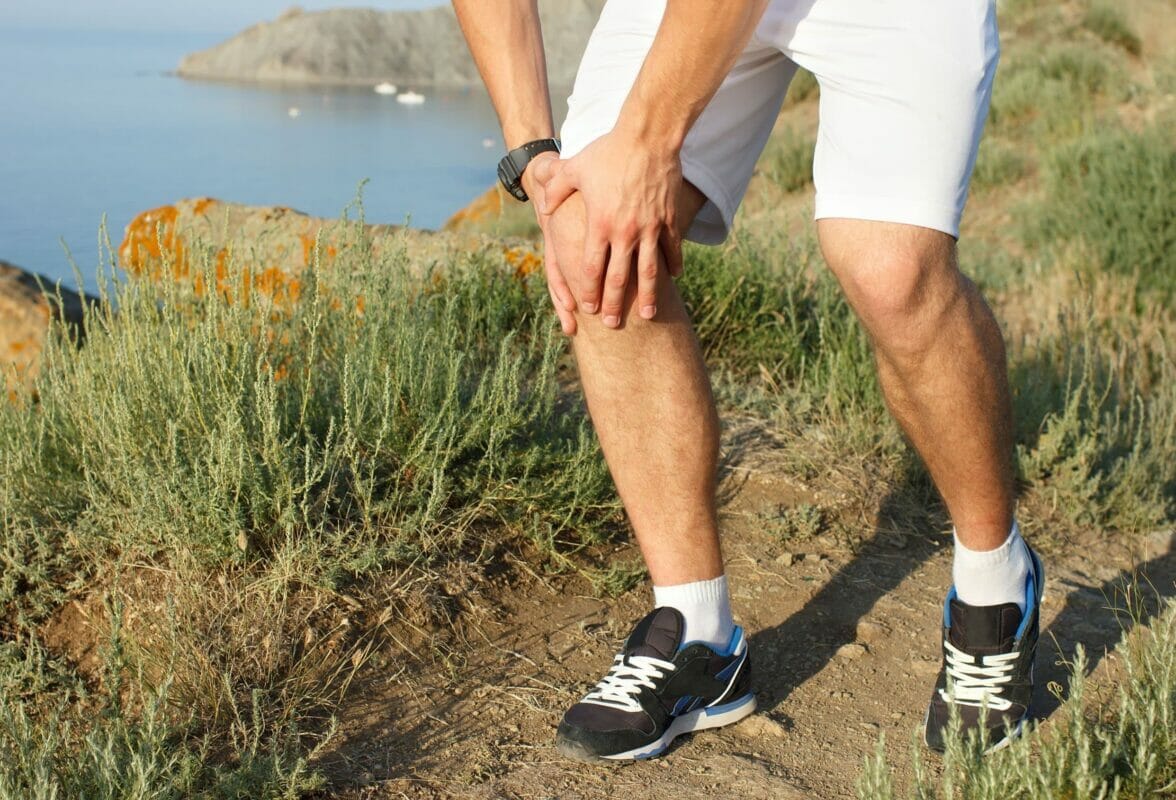



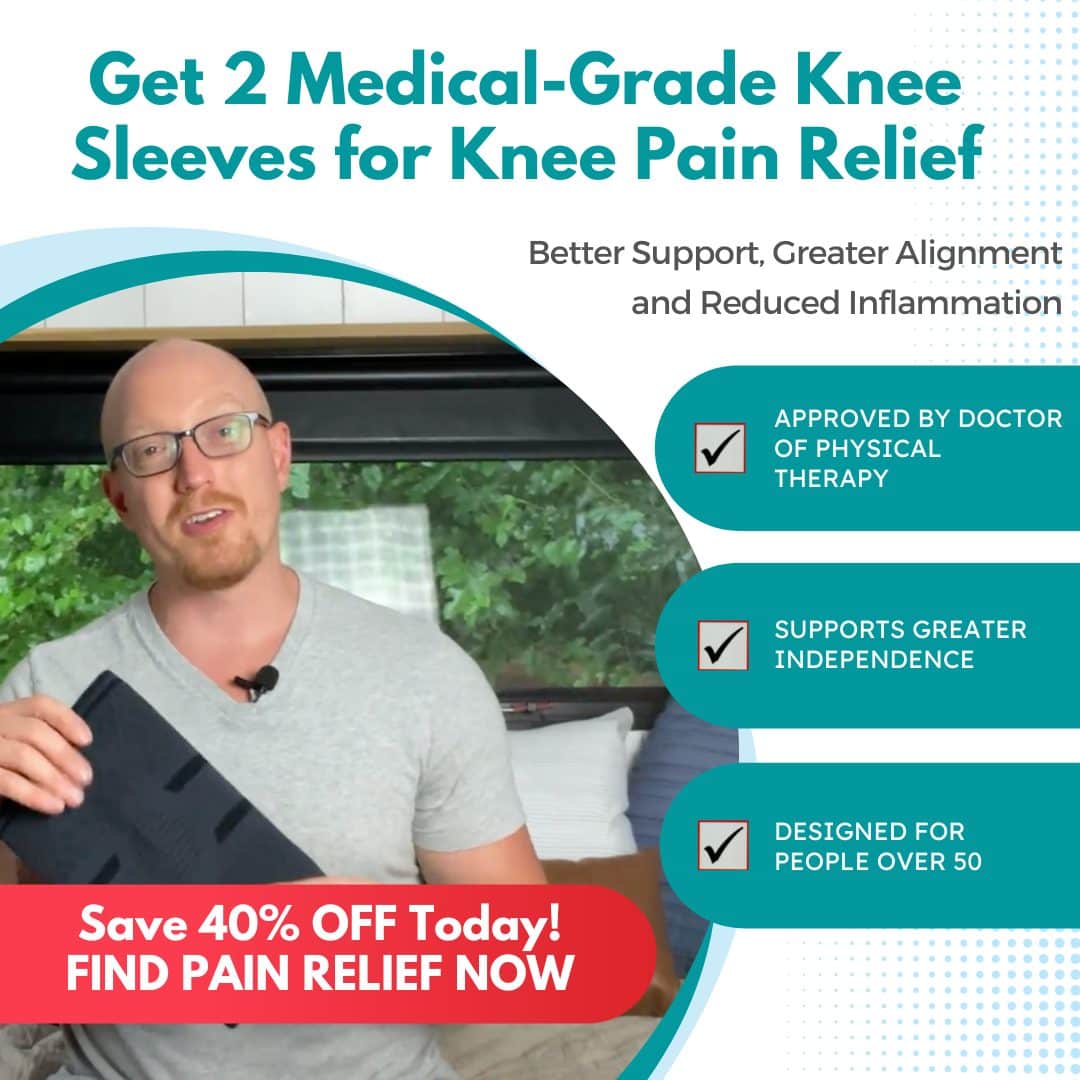

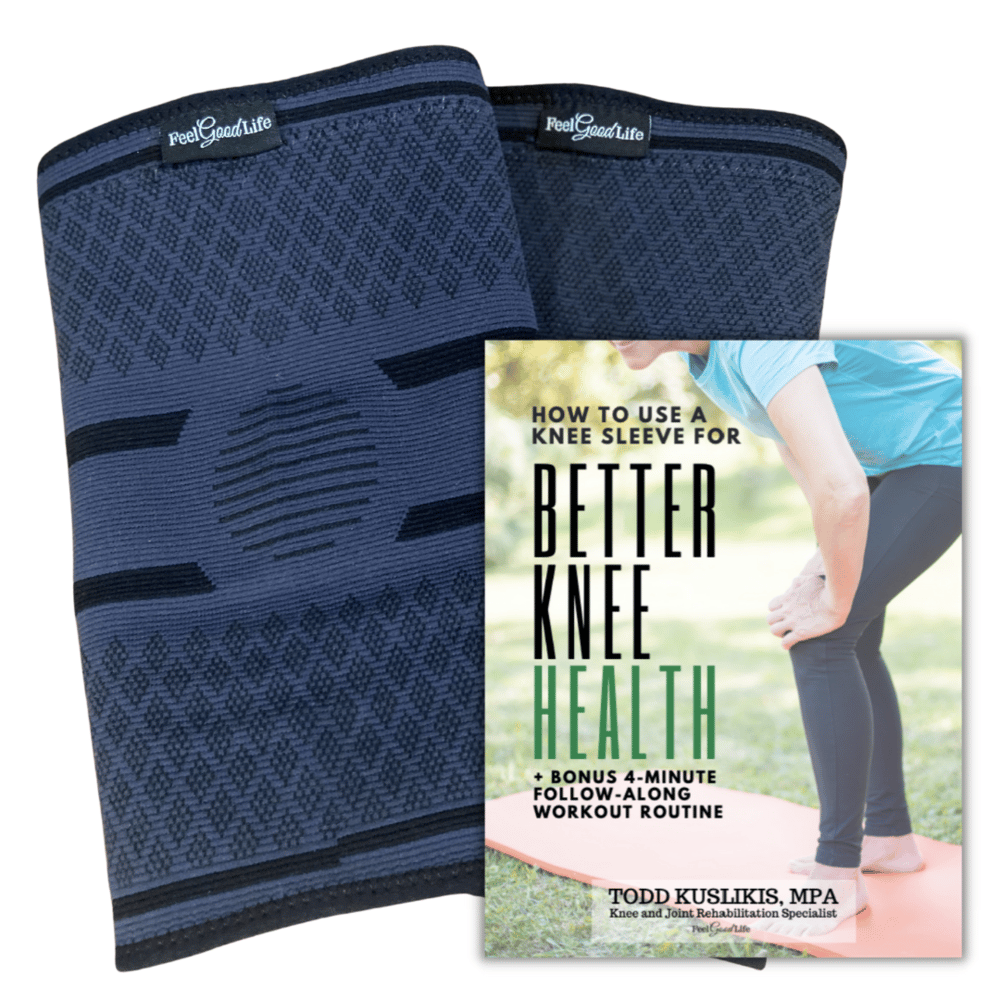

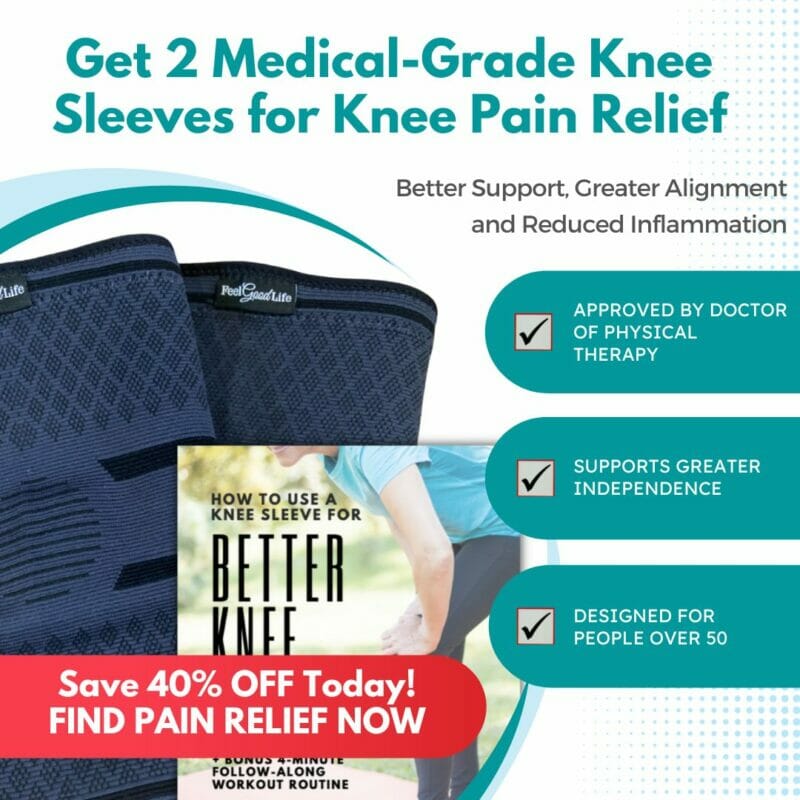
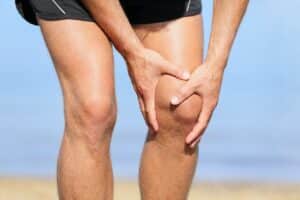
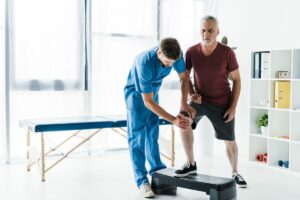

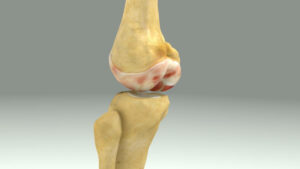


20 Responses
I have a lateral miniscus tear. I am 68. Go to PT 3 times a week for laser therapy and exercises. Waiting for surgeon appointment. Exercises have helped. Sleeping at night is the worst. When I wake the pain is so bad. Gets better as day goes on.
You have confirmed what I thought. I most likely have a medial meniscus tear. Have had ongoing issues for months. I had an X-ray which showed mild arthritis. Since then I have had a complete planter tear and had corrective surgery on the other foot. Two weeks after surgery I tripped on pavers with my darco shoe and it has been super sore since. I will try your exercises an see how I go.
Thank you
Went down stairs heard a loud pop. Went to Dr. torn Meniscus. Gave me three shots in knee over a period of 3/4 weeks.ordered therapy,they started me on some of the same exercises you have. Still not completely pain free,but I`m lazy and neglect exercising every day. Much better tho. Thank you for reminding me that it can be helped; with persistence and regular exercise. I`m 83 !!
Absolutely. Consistency is everything. Keep up the good work, Sally!
Hi
thank you for this information about knee pain I will start with your excersas thank you very much good jop
reg
Ibrahim
Saudi arabia
Absolutely, Ibrahim! Can't wait for you to get started.
Hello Thank-you for explaining exactly what I have been having for almost 4 years now. I am going to start doing the exercises and I have a app to see a knee surgeon in 15days. I don't want surgery and hope the pain goes away. Can I go walking to improve the knee strength.
Cheryl, I hope these exercises can help you avoid that surgery! Yes, you can go walking to improve your knee strength. Make sure you're listening to your body and you're not pushing yourself too hard.
I experienced a searing pain behind my right knee and then could not put any weight on it. Went to ortho and after viewing my x-rays which he said revealed advanced arthritis, he declared that as the culprit. I tried to explain it was only one leg and in the back of the knee. He said it was arthritis and gave me two cortisone shots and told me to come back in 3 months. He told me the cortisone would spread and take care of the problem. The pain, of course is still there and I live with it every day. It's been 3 months since the injury. After alot of Investigating online I've determined it is probably popliteal. I am starting your exercises with hopes they will help.
Pat, I'm sorry to hear that. I hope the exercises help relieve some of the pain you're experiencing!
I have been doing these exercises daily for a few weeks and it making a big difference! Thank you so much!
That's wonderful, Valerie! Keep up the good work.
I was diagnosed with meniscus tear or Bakers cyst two weeks ago. Doc gave me Cortisone shot and PT gave me exercises almost identical to the ones above. No more pain and swelling. I added stationary biking. I’m playing golf pain free and clicking in my knees has gone away. No surgery necessary. This works.
I'm so happy for you, Jim! That's great news. Keep up the good work!
Thank you for this article! I’m 64 yrs old & found out I have a medial meniscus tear… & I hadn’t a clue as to how it happened! X-rays & an MRI show no arthritis & just the pesky tear. I go to see the sports ortho surgeon tomorrow to have him explain my tear & my options. I do not want surgery & would rather exercise to heal! Thank you for this very informative article!! ?
Of course, Sue! I am glad that you can use this article to help benefit your meniscus tear! Best of luck to you.
Thank you for the easy explanations and drawings that can be understood.
Absolutely, Linde!
Thanks again! Appreciatively, G. Pearce
Thank you for reading Gail!